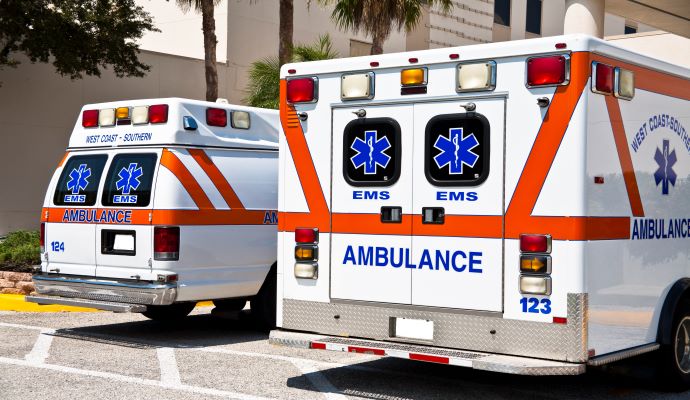UVA Health Strikes Telestroke Partnership in Central Virginia
In collaboration with community healthcare and EMS organizations, UVA Health will provide seven Virginia counties with access to telehealth-enabled stroke care to support faster access to treatment.

Source: Getty Images
- UVA Health is partnering with community healthcare organizations and emergency medical services (EMS) agencies to expand access to telestroke services in Central Virginia.
The partnership, supported by a three-year, $1.5 million grant from the Health Resources & Services Administration (HRSA), will equip ambulances serving seven Virginia counties with UVA Health's iTREAT mobile telemedicine system.
The iTREAT system will allow paramedics who suspect patients are having a stroke to connect with UVA Health stroke neurologists and emergency medicine physicians through video. The UVA physicians can examine the patient virtually and diagnose them.
Within stroke care, a quick diagnosis is necessary as the faster the patient receives treatment, the better their chances of survival and recovery, the press release noted. Ischemic strokes, which are the most common type of stroke, are caused by blood clots in the brain, and medications that can break down the clots are only effective if delivered between three and five hours from when symptoms begin.
Further, thrombectomies, which retrieve the clot from blood vessels, must be performed within a short time frame to be effective.
The seven Virginia counties that will gain access to the iTreat system are Buckingham, Culpeper, Greene, Louisa, Madison, Nelson, and Orange counties,
"We are quite grateful to HRSA to have this opportunity to care for our surrounding communities by enhancing the capabilities of paramedics and community health workers in our area. This will help us render excellent care not only for sudden strokes but also for the prevention and follow-up treatment of stroke," said Nina Solenski, MD, a stroke neurologist at UVA Health's Comprehensive Stroke Center, in a press release. "This is urgently needed. Buckingham County, for example, has nearly twice the rate of stroke deaths in non-Hispanic Black individuals compared to the national average. Reversing these types of disparities in our own surrounding communities is our goal and it's a team effort with all different types of healthcare providers."
The partnership will also provide education and training opportunities for paramedics, emergency medical technicians, nursing and EMS trainees, community health workers, and other rural healthcare providers.
The opportunities include training in community paramedicine, a community health model involving paramedics working outside their usual EMS roles. Community paramedicine services include chronic disease screening and providing referrals to community-based social services.
In addition, the partnership will offer online continuing education on stroke and other cardiovascular diseases and training on integrating telehealth technology into care plans.
This is the latest example of a provider partnership to expand access to stroke care through telehealth.
In January, Stephens County Hospital struck a partnership with Wellstar Health System to add virtual care consultations for stroke patients. Using virtual care technology, the vascular neurology team at Wellstar Kennestone Regional Medical Center will support Stephens County Hospital staff in managing stroke patients. The partnership's goal is to expand stroke care in Northeast Georgia.
Research has also shown that mobile telestroke programs can enable faster access to treatment.
A 2019 analysis of NewYork-Presbyterian Hospital's mobile telestroke program revealed that it helped cut 30 minutes from the average time-to-stroke-treatment. Through the program, mobile telestroke units — ambulances outfitted with mHealth and telehealth technology — were deployed in Manhattan. The technology connected first responders with neurologists at the nearest hospital in real time to support quicker stroke diagnoses.
According to the study, patients transported in mobile telestroke units received dispatch-to-thrombolysis care in about 61 minutes, compared to an average of 91 minutes for those transported by a conventional ambulance.
